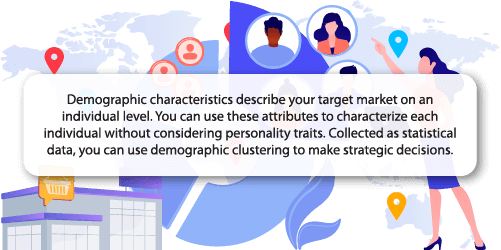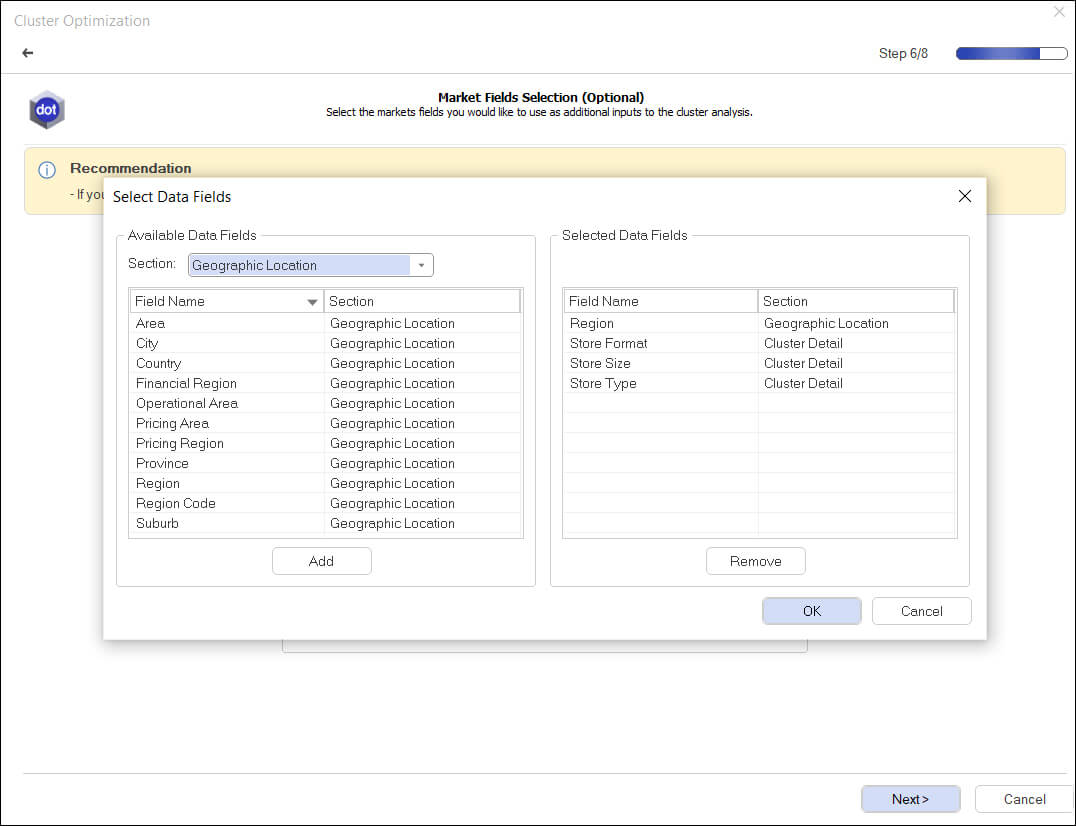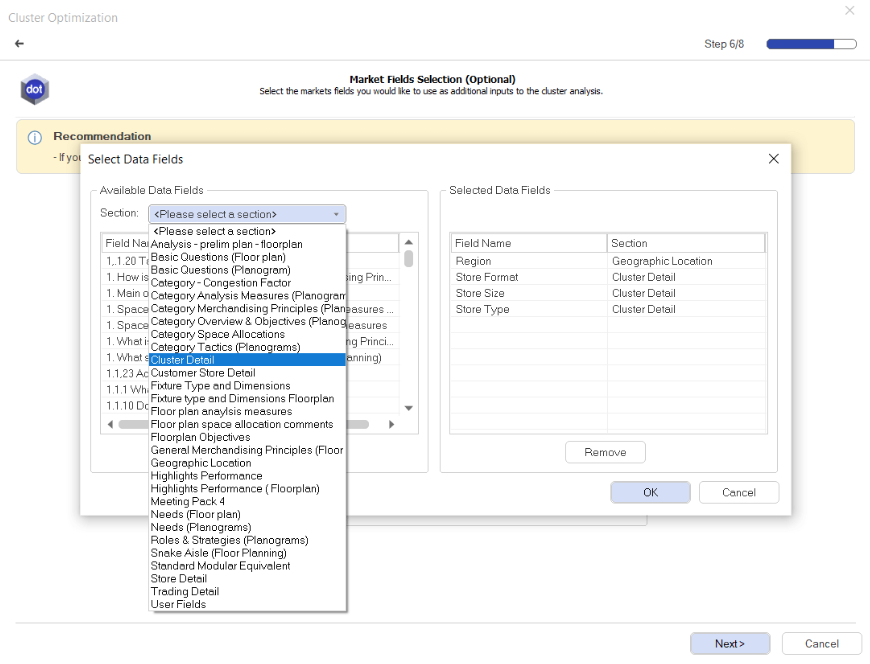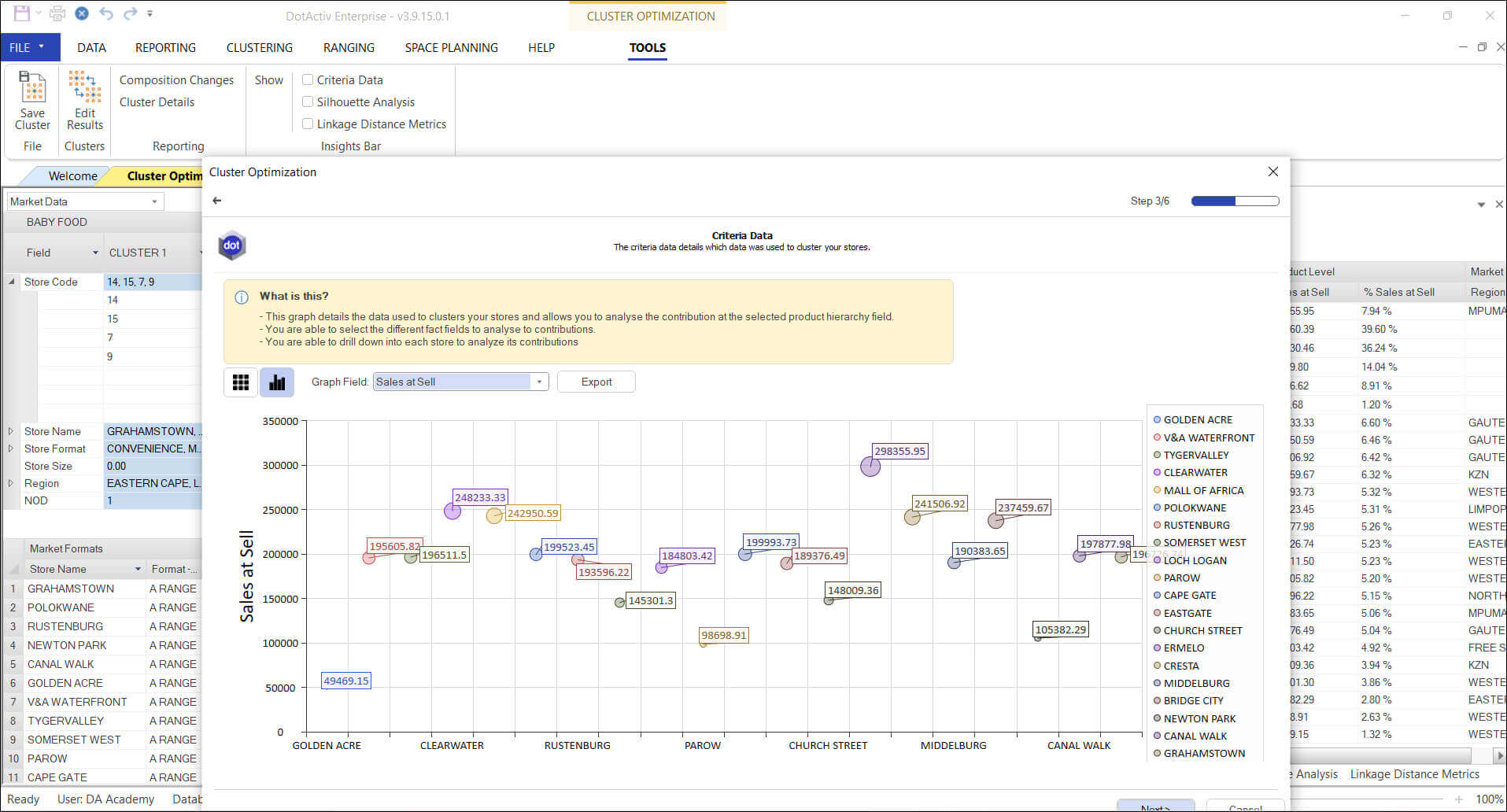Let's be upfront. To provide your customers with the products they want, you must understand them. Plain and simple. That means gathering as much information about them as possible. How old are they? What is their monthly income? Where are they located? It might sound intrusive. But, when you group customers based on similarities, everyone wins. And this is why demographic clustering is so effective.

That's not the only reason why it's worth it. This clustering technique empowers you. With it, you can generate insights from their characteristics and purchasing patterns. You can also make smarter business decisions. What's not to like? We'd argue very little if you’re serious about providing a great shopping experience.
But how can you go about using demographic clustering in your retail business? There are two distinct approaches to take. One: you buy specialist clustering software. You then build category-based clusters and tailor your assortments to customers' needs. Two: you turn to professionals well-versed in clustering and understanding shopping behavior.

What is demographic clustering?
Demographic clustering is the ideal technique to understand, group, and profile your customers. But what does it entail?

Demographic variables are discrete, so an unsupervised clustering algorithm is applicable. Examples include k-means or hierarchical (agglomerative or divisive). But, you may need to measure statistical significance. That's to establish a link between product preferences and demographic factors.
Collected as statistical data, you can use demographic information to make strategic decisions. These traits describe product preferences and purchasing patterns. You can also use it to target market segments and maximize your return on investment.
As for how you can access this information, you can collect it through surveys, census, or loyalty data. But what are demographic factors and characteristics? A few include:
Age
Millennials, Generation Z, and Baby Boomers. Each of your customers will belong to a generational cohort, so it's critical to know their age. Each has a different level of disposable income. They have diverse buying habits. They have a propensity to spend more on various products. Each customer also has different needs and preferences at each life stage.
Gender
Gender influences shopper behavior.
It's generally accepted that women are more likely to enjoy shopping, make impulse purchases, and sign up for loyalty programs than men. Men are more likely to spend less time shopping, and when they do, they shop purposefully. They are also more willing to try many brands until they find the right product.
But, this is not true in all cases. You must still identify and consider outliers in your demographic clustering process.
Income
Understanding the monthly household income of your demographic clusters is critical. It helps you know if they are willing to buy and can afford your product.
High-income consumers are more likely to buy luxury items that improve their lifestyle. Low-income consumers are more likely to purchase products that are necessities.
Level of education
The education level of your consumers influences their income and decision-making process.
Shoppers with higher levels of education are more likely to have higher incomes, busier lifestyles, and more expenses. But they'll also have more disposable income. They're more likely to buy products that support convenience, good nutrition, high quality, and status.
Geographic location
The geographic location of your demographic clusters influences product preferences and availability. Certain geographic areas are associated with specific income groups, cultural groups, and logistic accessibility. It means consumers in regions may only be able to afford, choose to buy, or be able to access certain products.
Other demographic factors to consider include:
- Family size and composition, and
- Ethnicity and culture group.
We also want to point out another factor: psychographics.
Psychographics
While demographics describe who your customers are, psychographics describes why they buy.
You can use buying habits, hobbies, purchasing patterns, lifestyle, values, attitudes, and opinions to understand your demographics better.
Understanding demographics and psychographics helps you target market segments and build cluster profiles.

Why is it necessary to use demographic clustering?
Demographic clustering enables you to create tailored product assortments for your shopper segments. What's more, you can target your pricing and marketing strategies. That leads to a decrease in capital loss and increased ROI.
You can grow your business
As mentioned, demographic clustering can help you understand your target market. It also assists you in planning the next moves for your business.
How? It can help you decide which new products to develop, where to open a new store, or which market segments to target.
Clustering also offers your business strategic direction and insight into your customers that your competitors may not have.
You can segment your customers
You can use demographic clustering to segment your customers into profiled groups. You can describe each cluster according to demographic variables, purchasing patterns, basket composition, and overall consumer behavior.
You can use this information to create a targeted range of products and shopping experiences to increase your profits.
Your marketing strategies are also more effective due to your in-depth understanding of your target market and their reaction to particular types of advertising media.
You can prevent capital loss
Understanding your consumers through demographic clustering helps you eliminate costly mistakes when planning your assortment, marketing, and developing products.
Since you know what your customers want, you can remove unsuccessful and ineffective products and strategies to prevent the loss of revenue.
You can understand customer needs better
Demographic clustering helps you understand the needs and wants of your customers. It enables you to identify gaps in the market and know how to modify your product offering to satisfy your shoppers.
This benefit links up with new product development as you can prioritize development efforts based on your cluster's needs and create products with a higher market success rate.

How do you set demographic clustering parameters in DotActiv software?
1. Setting up demographic clustering parameters in DotActiv software
The Cluster Optimization feature that the DotActiv software offers equips you to take a category through the clustering process. This feature considers demographic information and consumer buying behavioral patterns across all stores.
The feature analysis looks at the selected store, how far down the hierarchy you would like the analysis to occur, which departments and categories you would want to analyze, and the fact field(s) you wish to analyze.
By selecting these settings, you can see the purchasing behaviors based on your criteria.
You can utilize this feature to facilitate the Ranging process, ensuring that you select the best products for the stores in the specific clusters and tailor them to the demographics of your shoppers.
This feature allows you to learn about the shopping behavioral patterns within your stores and how the customers shop the categories.

That's not the only benefit.
This feature provides crucial insight into the decisions you need to make regarding the different clusters and ranges your stores offer.
You can align your available products across your created clusters. This allows your customers to find and shop for products that meet their preferences, which leads to increased store traffic and sales.
Creating these clusters is important because consumers in particular geographic regions may have different shopping requirements. This process allows you to analyze and spot shopping trends within those demographic clusters within their stores and the general market. It's also easier to make decisions once you know who your customers are and what they're looking for when they enter your stores.

2. Diagnosing demographic clustering problems with DotActiv software
Our retail clients have benefited from this software feature. For example, we had clients who had yet to use cluster their stores.
When a DotActiv category planner used the Clustering feature and realigned the clusters, we could help our retailer range products according to the specific created clusters. In this example, the client found that their ranges aligned with the needs and patterns of the stores within each cluster, which resulted in efficiency because we eliminated deadstock in their stores.
When our category planners work with clients with many stores, it's complicated and time-consuming to create planograms and ranges. Fortunately, clustering lets you analyze what is selling and performing across multiple stores. That makes it easier to list or delist items across a cluster of stores rather than at an individual store level. The process is more efficient as you group the stores based on shopping similarities.

Our category planners are experts in identifying if our clients have clustering problems, especially when using the DotActiv Software.
One of the ways that our category planners identify clustering problems is when they encounter categories that have previously been clustered but not updated. These are incorrectly clustered categories, as shown by our Cluster Optimization analysis.
The Cluster Optimizer determines the most effective store clusters, and when its results differ from the current clusters, it becomes critical to adopt the provided suggestions. Adopting these recommendations will solve the issues that a client might have experienced.
A clustering problem can also exist if a group of stores isn't performing as expected. That means that these stores aren't receiving the correct ranges and planograms. In most cases, these stores are either in the incorrect cluster or there is only a generic cluster, and these stores are not receiving what works for their demographic population.
We solve this issue by running the category through Cluster Optimizer and analyzing the results. The results will tell us if we must move these stores into a different cluster or if we should create more clusters.
After implementing any suggested clustering changes, we complete a post-analysis of the category to demonstrate the sales improvement achieved. This analysis provides valuable insights into the impact of improvement of the clustering changes.
The post-analysis shows a holistic view of the category after implementation.
3. Delivering impact with DotActiv's Cluster Optimization service
With our Cluster Optimization service, we can help retail businesses group their customers based on demographic factors like age, gender, income, and where they live. We also focus on the LSM customer group/location, store profile, and brand profile.
Then we use the software to group the stores into clusters by Premium, Mid-Tier & Economy. By doing this, you can understand your customers better and make decisions that suit different groups of people.
It helps us determine the shopping behaviors, such as if the majority of your shoppers in a specific store purchase economic, mid-tier, or premium products. It also helps us with ranging products and creating/improving the best planograms that will fit the needs of your shoppers and what you need.
For example, you might find that one group of your customers is primarily young people with high incomes, while another group is older people with lower incomes. You can use this information to make decisions about marketing, what products to sell, and how to set up stores to make your customers happy.
DotActiv's category planners use their knowledge and software tools to help you make better choices based on what you know about your customers. We collect and analyze customer data, segment customers into clusters based on demographics, and provide insights. We support implementation, monitor performance, and evaluate results to ensure desired outcomes and optimize your retail operations.
The results ensure efficiency and facilitate the process so that it is quicker and more efficient for everyone involved.
So who makes for an ideal client in this instance?
You're ideal if you want to make your retail business better and attract the right customers. It's also for you if you have many stores nationwide and want to achieve the goals for each store. Clustering will make the overwhelming process more digestible.
You can also expect the following:
- Knowing your customers better: Dividing customers into groups helps you understand what they like and want.
- Better marketing: When you know which groups of customers like what, you can advertise to them to make them more likely to purchase the products. That means more foot traffic and more sales.
- Choosing the right products: Dividing customers into groups helps you know which products will be popular within which different groups.
- Better store layout: By understanding what each group of customers prefers to purchase, you can arrange your store that makes customers want to increase their purchasing habits.
- Measuring results: You can measure how well cluster optimization works by looking at things such as the movement of products, the shopping experience, how many customers return to your store, and the average spend.
Of course, you might find your business needing help with problems when setting up clusters. Fortunately, DotActiv can help you overcome them. We can help in the following ways:
- We assess and clean data: DotActiv helps you check your data for problems and gaps. We ensure your data is accurate and complete by cleaning and validating it.
- We complete data analysis: DotActiv uses advanced methods to analyze customer data and find meaningful clusters. We are experts in retail and can provide valuable insights and practical advice based on the clusters we find.
- We provide custom solutions: DotActiv creates personalized solutions for you. We understand your goals, data, needs, and limitations to develop an approach that fits your situation.
- We deliver timeously: The time it takes to set up clusters can vary. It depends on factors like the size of your customer data, the quality of the data, and the complexity of your operations.
- We champion collaboration: DotActiv works closely with your team. We collaborate with data analysts, category managers, marketers, and other staff to ensure the cluster development process is comprehensive and successful.
By helping you with these common problems, We can create clusters using demographic information, helping you to make smarter decisions and improve your retail operations.

Conclusion
Demographic clustering is a valuable technique for effective customer segmentation and targeted marketing. You can use it in your business if you are a large retailer looking to optimize your product offering or a small business wanting to optimize a niche market.
Are you looking to tailor your categories and product offering to become a store where shoppers can find what they want whenever they visit?
To discuss your unique requirements and how a DotActiv solution can help you achieve your clustering objectives and goals, book a complimentary meeting with a DotActiv expert here. Alternatively, browse our software options on our online store here.


